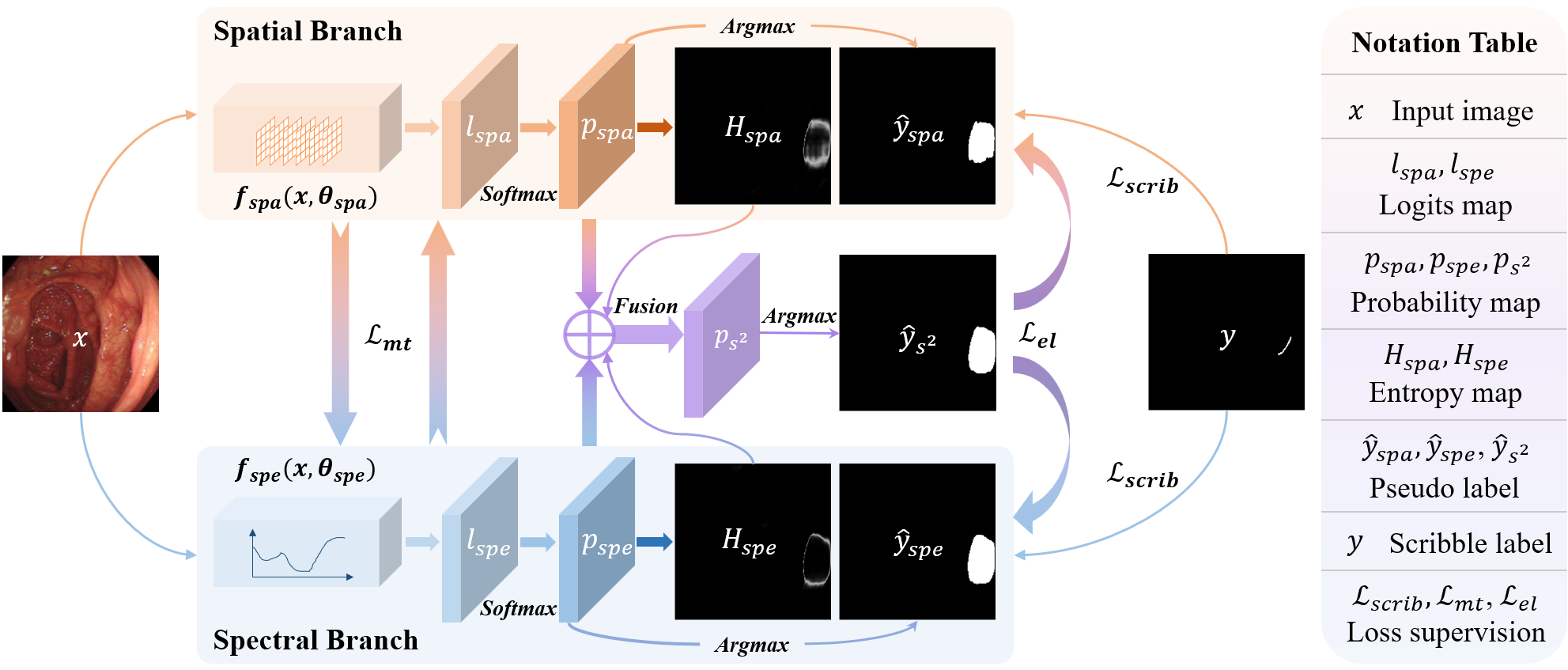S$^2$ME: Spatial-Spectral Mutual Teaching and Ensemble Learning for Scribble-supervised Polyp Segmentation
Fully-supervised polyp segmentation has accomplished significant triumphs over the years in advancing the early diagnosis of colorectal cancer. However, label-efficient solutions from weak supervision like scribbles are rarely explored yet primarily meaningful and demanding in medical practice due to the expensiveness and scarcity of densely-annotated polyp data. Besides, various deployment issues, including data shifts and corruption, put forward further requests for model generalization and robustness. To address these concerns, we design a framework of Spatial-Spectral Dual-branch Mutual Teaching and Entropy-guided Pseudo Label Ensemble Learning (S$^2$ME). Concretely, for the first time in weakly-supervised medical image segmentation, we promote the dual-branch co-teaching framework by leveraging the intrinsic complementarity of features extracted from the spatial and spectral domains and encouraging cross-space consistency through collaborative optimization. Furthermore, to produce reliable mixed pseudo labels, which enhance the effectiveness of ensemble learning, we introduce a novel adaptive pixel-wise fusion technique based on the entropy guidance from the spatial and spectral branches. Our strategy efficiently mitigates the deleterious effects of uncertainty and noise present in pseudo labels and surpasses previous alternatives in terms of efficacy. Ultimately, we formulate a holistic optimization objective to learn from the hybrid supervision of scribbles and pseudo labels. Extensive experiments and evaluation on four public datasets demonstrate the superiority of our method regarding in-distribution accuracy, out-of-distribution generalization, and robustness, highlighting its promising clinical significance. Our code is available at https://github.com/lofrienger/S2ME.
PDF Abstract




 Kvasir-SEG
Kvasir-SEG